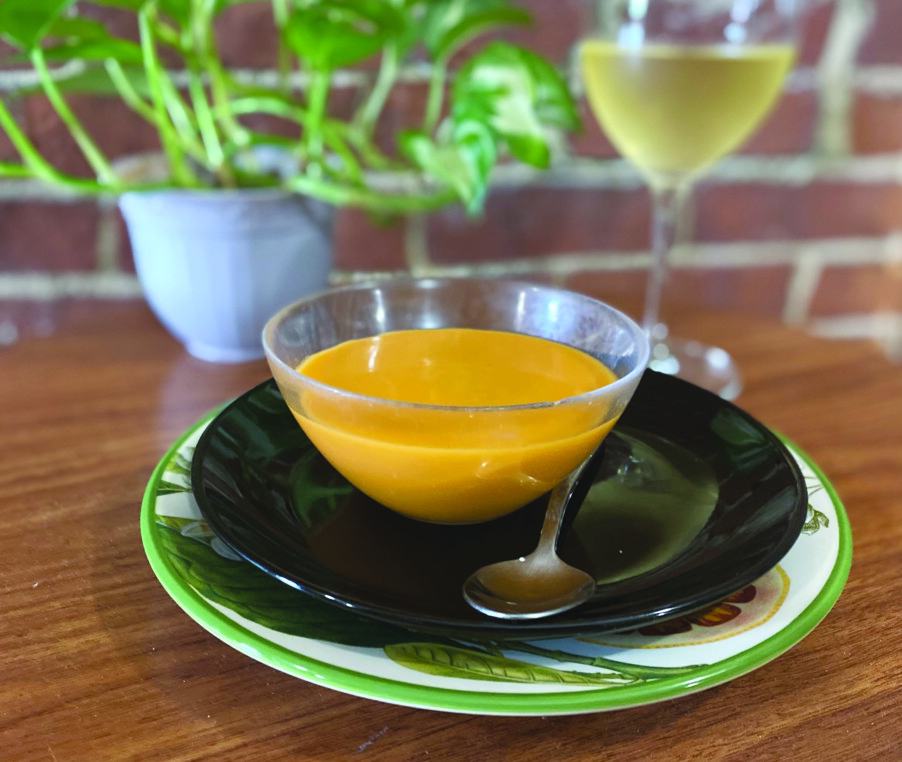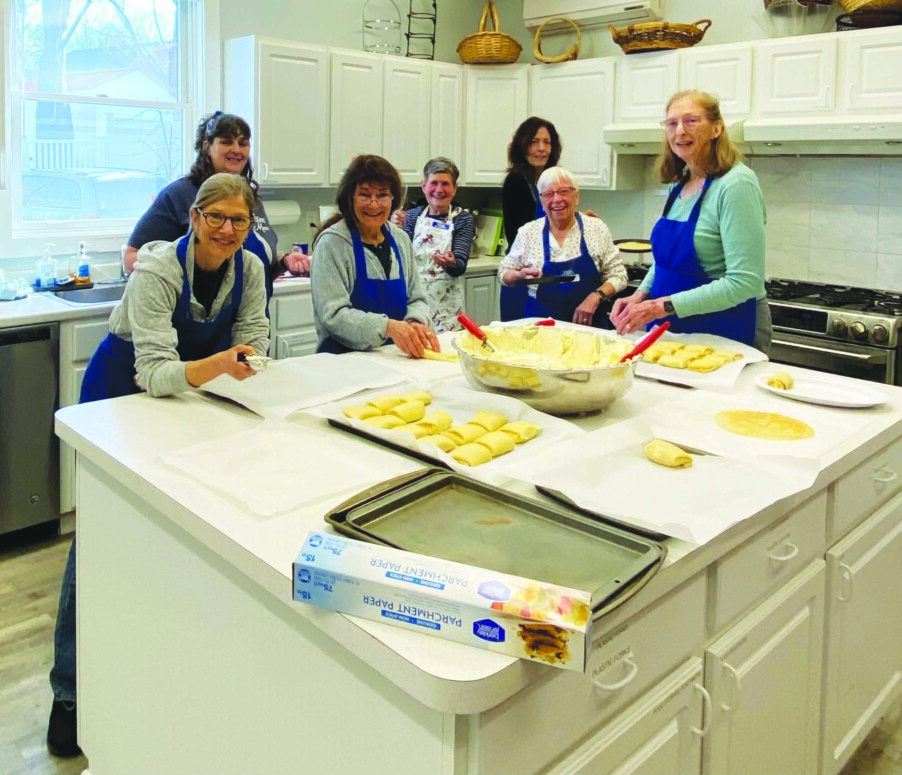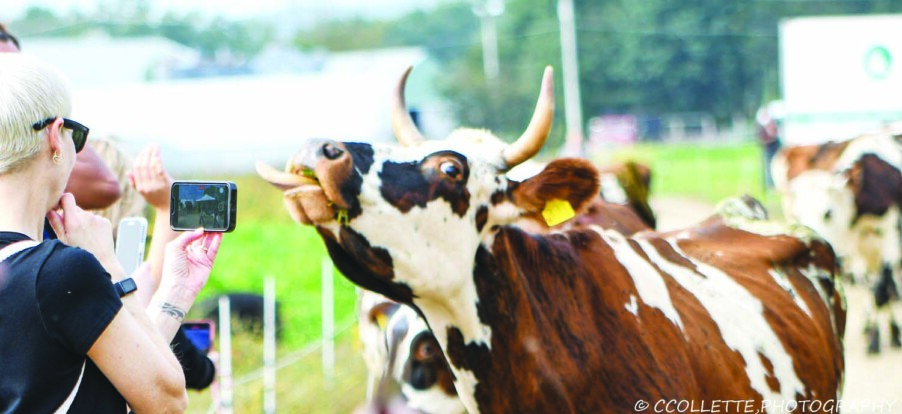Here is a cold Spanish soup for days when it’s so hot that you can’t finish typing a coherent…
- 2 pounds (900 g) fresh tomatoes
- ¼ cup (50 g) pickled jalapeños
- 1 medium-sized cucumber, peeled
- 1 small white onion, peeled
- 1 clove of garlic
- 2 teaspoons kosher salt, or coarse sea salt
- ½ cup (100 gr) extra virgin olive oil
- 3 slices of stale, crusty bread — Italian or French
- 2 teaspoons sherry vinegar
Roughly chop the tomatoes, cucumber, onion and garlic, then transfer them to your blender. Mine is a heavy-duty job, named Steve, but a regular blender, an immersion (stick) blender, or food processor will do the trick, too.
Add the salt and pickled jalapeños, then blend everything, slowly at first, then more briskly. Your blender has been impatiently waiting for a chance to really go to town on something, so give him a treat and work your way through the dial or buttons, and let him really exert himself. You’ll be able to feel his smile as he sucks chunks to the bottom of the jar and powers through them.
Let your blender play with the puree for a couple of minutes, until everything has been broken down about as much as it’s going to be, then bring the speed back down to whatever equates to “medium” on your device.
You know that detachable plug in the center of your blender lid that you’ve always wondered vaguely about? Now is your chance to put it to use. While your proto-gazpacho is still blending, remove the plug and drizzle the olive oil through the hole and into your pinkish mixture. Blend everything for another 30 seconds or so, to make certain the olive oil is completely incorporated.
Strain the mixture through a fine-mesh strainer. This is to remove any remaining bits of seeds or tomato skins. Depending on how fine your strainer is, this will probably take about 20 minutes. You can help the process along by scraping the walls of the strainer with a spoon from time to time.
Meanwhile, soak your bread slices in water, then squeeze them dry.
Check on the gazpacho in your strainer. If it still looks fairly liquid, stir it around to encourage more straining, then go find something to do for a few minutes. How long has it been since you went through the top shelf in your refrigerator and got rid of all the food that has turned into science experiments?
When your gazpacho has thoroughly drained, discard the solids, thanking them for giving so deeply of themselves, then pour the liquid back into your blender.
Add your soggy bread, then blend everything for another minute or so.
Gazpacho is at its best ice-cold, so it needs to be chilled in your refrigerator for at least six hours. If you don’t have immediate plans for hummus or piña coladas, find some room on the bottom shelf, and just store it in the blender jar.
Right before serving, remove the blender jar from the refrigerator. Add two teaspoons of the best vinegar you have — sherry or Champagne vinegar is good, but it doesn’t have to be that fancy — and give it one last whirl in the blender.
This is delicious, but very, very smooth. If you feel like you’re missing some texture, add chunks of torn bread for garnish.
This is a festive-looking soup. Depending on your tomatoes, it might be anywhere from a pastel pink color to something like a terracotta orange. You might find yourself facing a bowl of it and saying to yourself, “I don’t know; it’s really hot. I’m not sure I’m up for soup….”
But you went to all this trouble, so you figure you owe it to yourself to at least try it, so you taste a spoonful.
And your mouth explodes in Technicolor.
This is vibrant and cold, and fresh and acidic and cold, and one spoonful just isn’t enough. It’s really good. Why don’t you make this every week during the summer?
That’s a good question.
Featured Photo: Photo by John Fladd.






